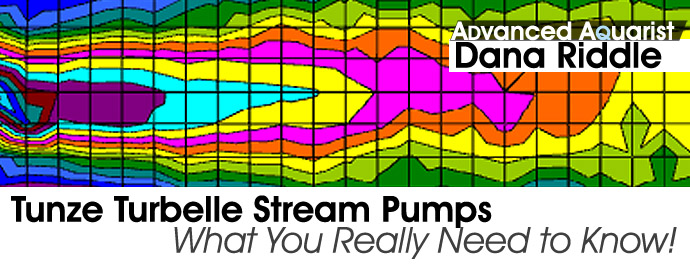
Have you ever wondered why you’re unsuccessful in the husbandry of certain corals? Perhaps you’ve emulated the aquarium of a friend or one you’ve seen in a shop. Every detail has been copied. Why does the success others have seem to elude you with certain corals? As with many endeavors, the devil is in the details. While some might contribute lack of success to lighting or water chemistry issues, it is certain that many failures can be attributed to water motion. Estimating water velocity visually is difficult – the clear waters of reef aquaria don’t allow easy visualizations. This article will offer insights of some of the popular water pumps available to hobbyists and can aid them in selection of the proper pump for your aquarium as well as estimating proper placement for a few coral species.

Hundreds of water velocity data points were gathered with an electronic meter and graphed to allow a visualization of water movement in an aquarium.
Tunze (technically Aquarientechnik GmbH, and pronounced ‘tune-zah’) is a familiar name to most serious reef aquarium hobbyists. Headquartered in Penzburg, Germany, tunze has been manufacturing products for the aquarium market since 1960. Their products are noted for quality and upper-end pricing. This month, we’ll examine the performance of tunze Turbelle stream 2 pumps. This report follows a similar article where Tunze nanostream pumps were tested (see http://www.advancedaquarist.com/2013/4/review for details).
Many reviews of aquarium pumps examine only the pump’s capacity, usually expressed as gallons per hour, or liters per hour. While this metric is fine for comparative purposes, we must realize that ‘gallons per hour’ is meaningless on a real reef. Researchers often test for, and report water movement as, velocity (feet per second, for example). Scientists have determined that corals have differing preferences for water velocity.
Defining Velocity Zones and Why You Should Care
Water velocity has long been recognized as an important factor on natural coral reefs and there is much valuable information available to hobbyists. The categories chosen for this article were developed by one of the more prolific researchers of coral reef water flow dynamics – Kenneth Sebens. In his 1997 work, Sebens categorized water velocities into 4 zones.
- Low: Velocity of <1 to 5 centimeters per second (<~1/2″ to 2″ per second). This zone is periodically found on deeper (>25m, or ~82 feet depth) fore-reefs, isolated tide pools (such as at low tide), lagoons, and back-reefs.
- Moderate: Velocity of 6 to 20 centimeters per second (~2″ to 8″ per second). Mid- to shallow-fore reefs often experience these flows.
- High: Water speed of 21 to 50 centimeters per second (~8″ to 20″ inches per second). High velocities found in surf zones.
- Very High: Velocity exceeds 50 centimeters per second (>20″ per second). Also found in some surf zones, storm surges, reef spur and grooves, etc.
- Note that these categories are not all inclusive – oceanic water velocity can sometimes be measured in meters per second.
Of course, this information is of little use without specifics. In a recent excellent article Wijgerde (2013, http://www.advancedaquarist.com/2013/12/aafeature)
lists the optimal water velocities for a number of stony and soft corals as well as gorgonians. See Table 1.
| Coral | Optimum Velocity for Prey Capture (inches/sec) |
|---|---|
| Acanthogorgia vegae | 3.1 |
| Agaricia agaricites | 7.1 |
| Agaricia agaricites (bifacial) | 11.8 |
| Agaricia agaricites (horizontal) | 7.1 to 19.7 |
| Briareum asbestinum | 2.3 to 4.7 |
| Dendronephthya hemprichii | 3.9 to 9.8 |
| Eunicea tournefortis | 2.4 to 4.72 |
| Galaxea fascicularis | 3.9 |
| Lophelia petusa | 1.0 |
| Melithaea ochracea | 3.1 |
| Plexaura dichotoma | 2.4 to 4.72 |
| Porites porites | 3.5 to 4.33 |
| Pseudopterogorgia americana | 2.4 to 4.72 |
| Subergorgia suberasa | 3.1 |
See Wijgerde’s article for details.
Water velocity measurements I’ve made at ~15′ depth on reefs here in Hawaii (on a calm day) show an oscillating water motion of about 4 to 6 inches per second. These reefs are dominated by Porites lobata, Porites lutea, Pocillopora meandrina, and Pocillopora eydouxi. During times of strong swells, the water is much too dangerous to enter, and velocities are certainly best reported in feet per second.
It should be clear that water motion is very important in an aquarium. In addition to optimal feeding velocities, water motion plays an important role in detritus removal, waste removal, gas exchange, delivery of nutrients and micro-nutrients through maintenance of a thin boundary layer, and so on.
Turbelle stream Pumps
tunze currently markets 6 Turbelle stream pumps in the United States (7 pumps if the count the 6105’s two configurations – a large (2.49″ diameter) and small outlet – 1.96″ diameter). All Turbelle stream pumps utilize propeller technology for creating water motion. See Figure 1.
We’ll now begin our examination of tunze Turbelle stream propeller pumps, beginning with:
Pump: 6065 Turbelle stream 2
- Maximum Discharge Velocity: 2.93 feet per second
- Discharge Diameter: 1.97 inches
- Volts: 121.1
- Amps: 0.18
- Watts: 12
- Hertz: 60
- Controllable (by tunze Multicontroller): No
- tunze recommends this pump for aquaria sized: 65 to 210 gallons (US)
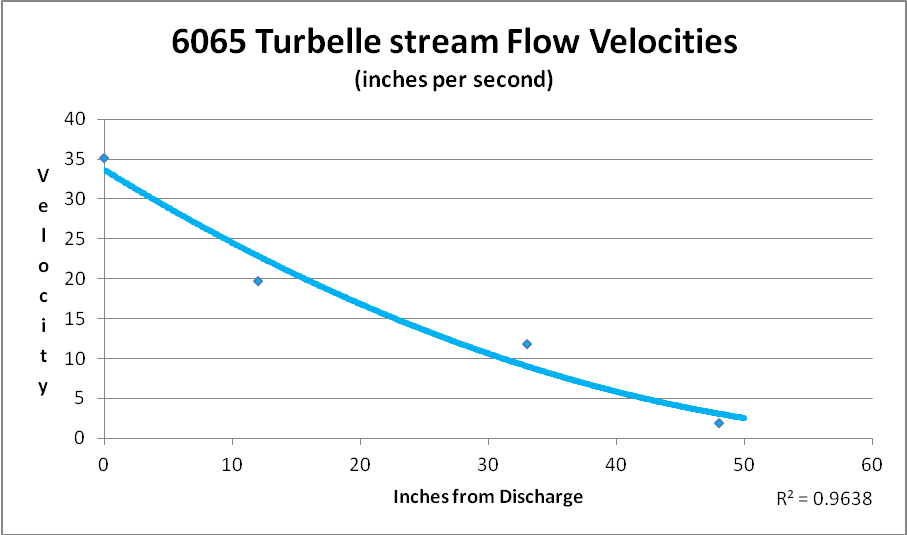
Figure 3. A polynomial trend line allows an estimation of water velocity at various distances from the pump’s discharge.
Pump: 6085 Turbelle stream 2
- Maximum Discharge Velocity: 4.02 feet per second
- Discharge Diameter: 1.97 inches
- Volts: 120.2
- Amps: 0.18
- Watts: 15.7
- Hertz: 59.9
- Controllable (by tunze Multicontroller): No
- tunze recommends this pump for aquaria sized: 105-265 gallons (US)
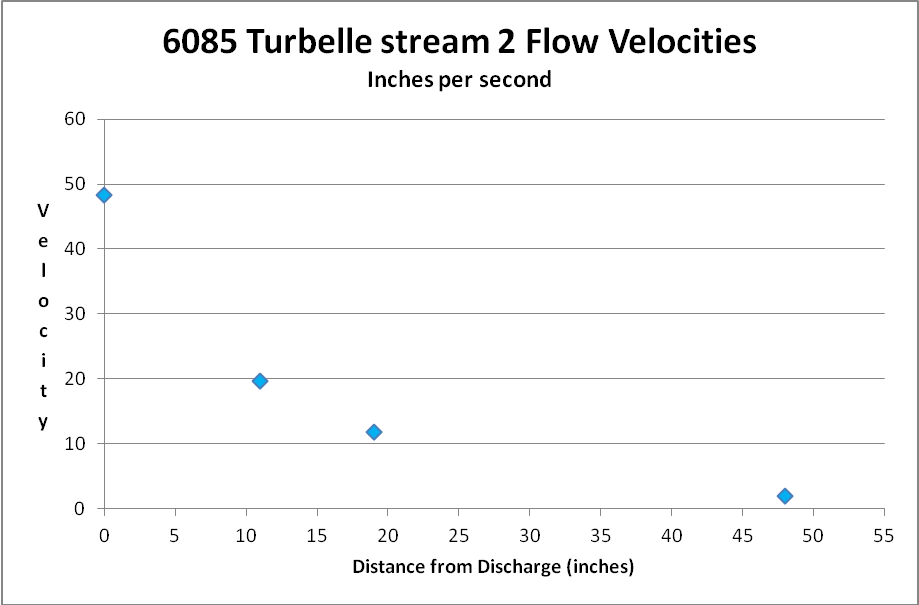
Figure 5. 6085 Turbelle stream velocity data. No trend line is included as the best fit went into negative territory. Still, valuable information is apparent.
Pump: 6105 Turbelle stream 2 (large outlet)
- Maximum Discharge Velocity: 3.88 feet per second
- Discharge Diameter: 2.48 inches
- Volts: 120.1
- Amps: 0.35
- Watts: 20.2
- Hertz: 59.9
- Controllable (by tunze Multicontroller): Yes
- tunze recommends this pump for aquaria sized: 50 to 525 gallons (US)
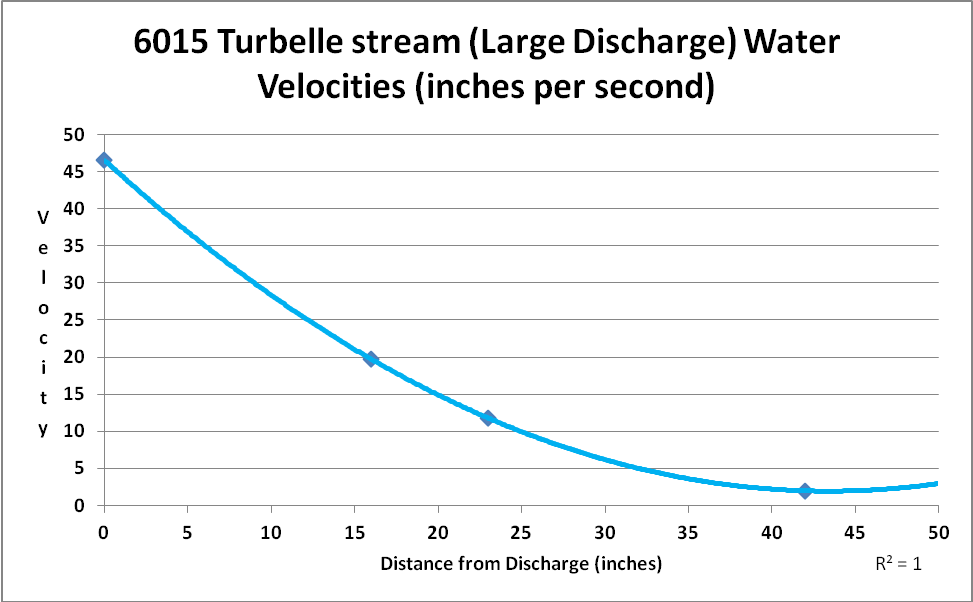
Figure 7. A polynomial trend line allows an estimation of water velocity at various distances from the pump’s discharge.
Pump: 6105 Turbelle stream 2 (small outlet)
- Maximum Discharge Velocity: 4.12 feet per second
- Discharge Diameter: 1.96 inches
- Volts: 119.2
- Amps: 0.33
- Watts: 19.6
- Hertz: 59.9
- tunze recommends this pump for aquaria sized: 50 to 525 gallons (US)
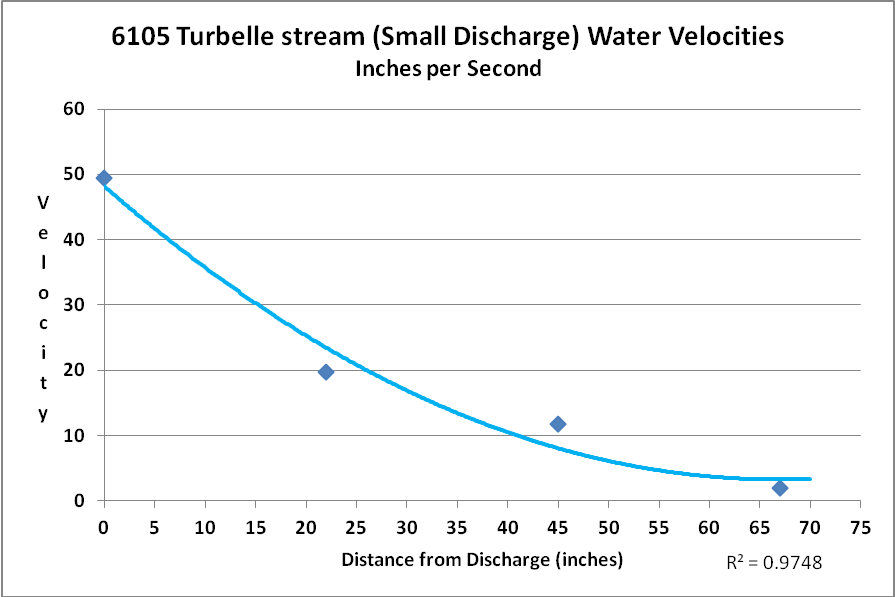
Figure 9. A polynomial trend line allows an estimation of water velocity at various distances from the pump’s discharge.
Pump: 6125 Turbelle stream 2
- Maximum Discharge Velocity: 3.63 feet per second
- Discharge Diameter: 2.48 inches
- Volts: 121.7
- Amps: 0.36
- Watts: 26.2
- Hertz: 60
- Controllable (by tunze Multicontroller): No
- tunze recommends this pump for aquaria sized: 105 to 525 gallons (US)
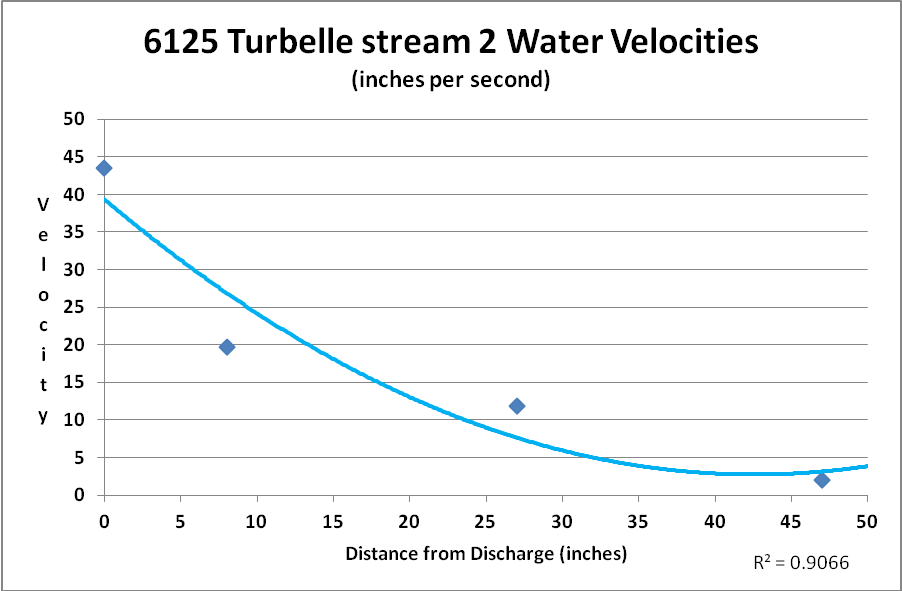
Figure 11. A polynomial trend line allows an estimation of water velocity at various distances from the pump’s discharge.
Pump: 6155 Turbelle stream 2
- Maximum Discharge Velocity: 4.10 feet per second
- Discharge Diameter: 2.48 inches
- Volts: 120.2
- Amps: 0.54
- Watts: 45
- Hertz: 60
- Controllable (by tunze Multicontroller): Yes
- tunze recommends this pump for aquaria sized: >800 gallons (US)
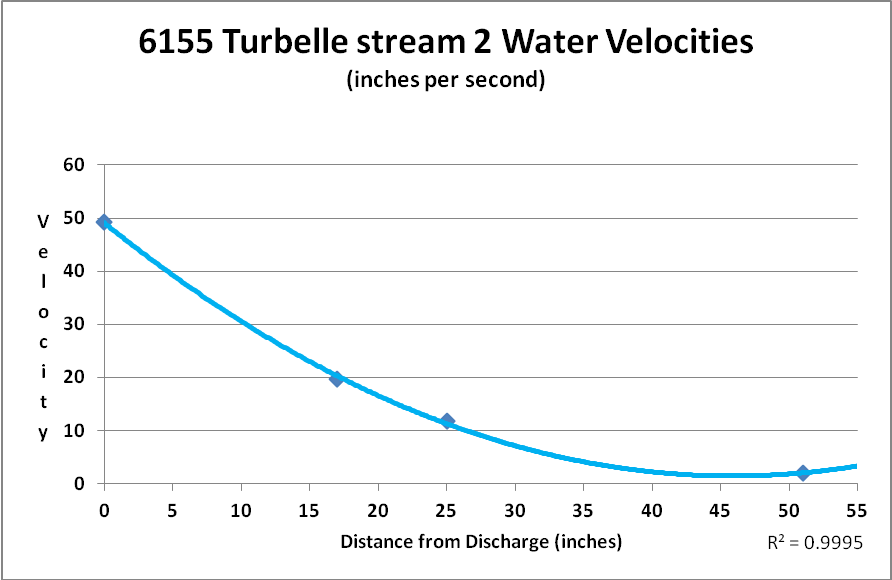
Figure 13. A polynomial trend line allows an estimation of water velocity at various distances from the pump’s discharge.
Pump: 6255 Turbelle stream 2
- Maximum Discharge Velocity: 5.31 feet per second
- Discharge Diameter: 2.48 inches
- Volts: 120.4
- Amps: 0.65
- Watts: 61
- Hertz: 60
- Controllable (by tunze Multicontroller): Yes
- tunze recommends this pump for aquaria sized: >1,050 gallons (US)
The 6255 Turbelle stream pump is the largest of the ‘steam’ lineup. It delivers the highest water velocity (5.12 feet per second) of any pump examined here, while having the largest discharge diameter (3″). Two sets of tests were performed on this pump. The first was in a 240-gallon aquarium (8′ x 2′ x 2′). An odd flow pattern was observed in this ‘small’ tank (see Figure 20). A second test was conducted in a 740-gallon fiberglass tank (see Figures 22). The observed flow pattern was much different (see Figures 14 and 15.) See the ‘Discussion’ section below for further comments.

Figure 14. Test 2: Water velocities to 42 inches from the discharge of the 6255. This stream is dynamic and changes constantly (mostly on the x-axis.) Red = >20″/sec; Orange = 8″ – 20″/sec; Yellow = 2″ – 8″/sec; Green = <2″/sec.
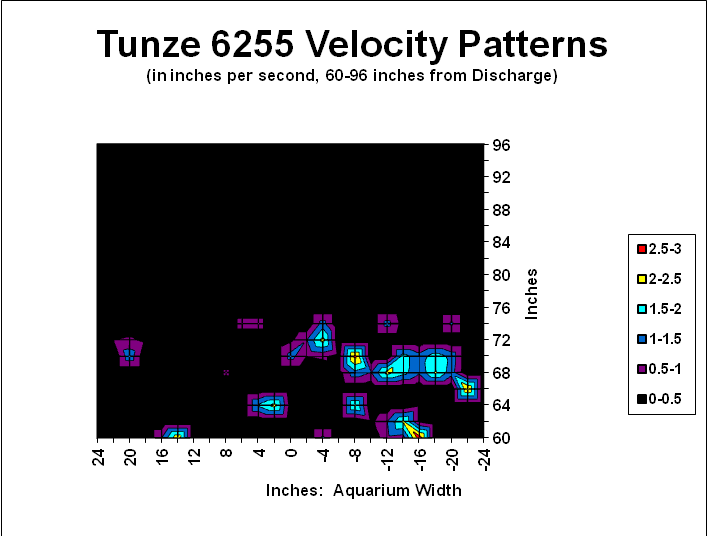
Figure 15. Test 2: Water velocities created by the 6255 (60 to 96 inches from the pump’s discharge – y-axis.) Vortices spin in random patterns. A brace atop the vat prevented gathering of data from 42″ to 60″.
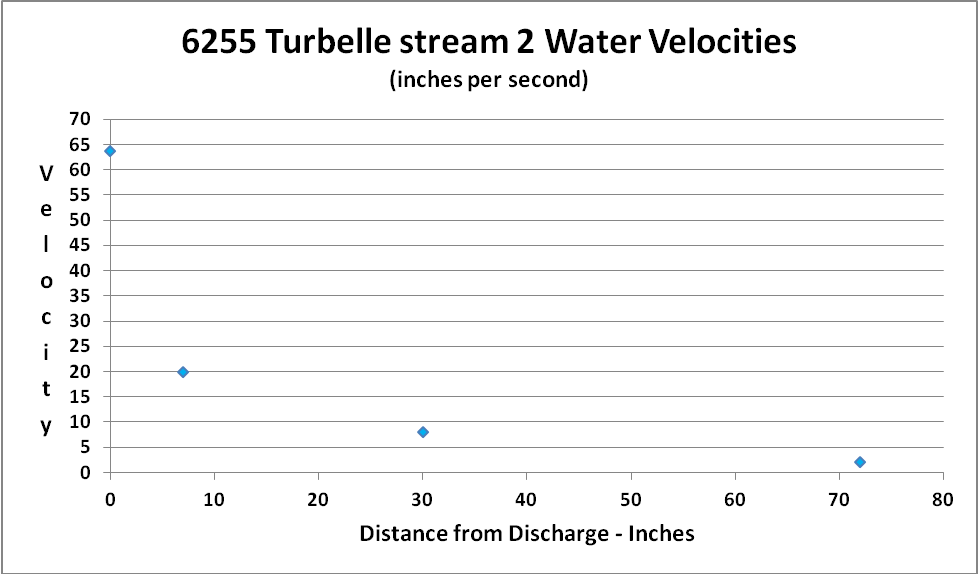
Figure 16. 6085 Turbelle stream velocity data. No trend line is included as the best fit went into negative territory. Still, valuable information is presented.
Discussion
It is difficult to underestimate the importance of water motion in an aquarium, yet research on the best measure (velocity) is rare in hobbyist literature.
The propeller pumps and their technology have revolutionized the way reef keepers move water with their aquaria. With these changes come challenges. Propeller pumps can create zones of very high water velocity (as defined by Sebens, 1993; 1997a; 1997b) on an order unseen with many previous devices. Proper positioning of sessile invertebrates in an aquarium becomes more important.
Figure 17 shows the approximate velocities created by the Turbelle stream pump series.
As one can clearly see, pump size (defined as power consumption in watts) does not necessarily equate to higher velocity at the pump’s discharge. Though motor power and speed are important, another factor comes into play – that of the pump discharge diameter. An excellent example can be seen in Figure 17’s display of velocity zones created by the 6105. The only difference in the pump’s configuration is the discharge diameter (the pump comes with two different sized discharge nozzles – 1.96″ and 2.48″.) Decreasing the discharge diameter by ~0.5″ increases the water velocity by about 30%. In most any practical scenario, reducing the area of a discharge through which a known volume passes will increase velocity. It would be interesting if tunze offered differently sized nozzles for all their pumps.
Generally, the higher the discharge velocity, the longer the jet stream (or plume). See Figure 18. The diameter of the plume is also very important.
Water motion might be impeded if the plume diameter exceeds the width and depth of the aquarium. In this case, the pump pushes water to one end of the aquarium and constant force tends to make the water ‘pile up.’ This cannot continue indefinitely, and eventually the water at the end of the aquarium will return towards the pump. This is likely to cause erratic flow patterns and turbulence. Figure 19 shows a crude approximation of this concept.
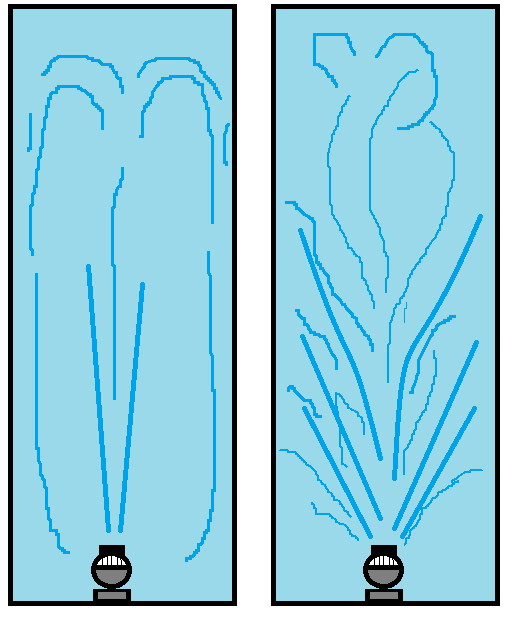
Figure 19. Two potential flow patterns. At top, the pump’s discharge plume diameter is less than the width and depth of the aquarium, allowing for two oval shape water flow patterns. At bottom, the plume diameter exceeds width and depth and creates hectic flow patterns. Though not necessarily bad, the flow patterns become unpredictable.
An example of a flow pattern created by an oversized pump is seen in Figure 20. Compare this contorted flow pattern created by the 6255 Turbelle pump (in a 240-gallon tank) to Figure 14 (velocities measured in a much larger aquarium). The plume seen in the larger aquarium resembles the flow patterns seen with the other (smaller) pumps.
Recommendations based on aquarium volume seem to be a starting point. However, the dimensions of the aquarium should not be ignored. These data suggests that plume diameter should not exceed tank width and depth. Aquarium length is still of importance, of course, due to flow attenuation and must be considered as well – Figure 15 shows low velocity, whirling vortices created by the 6255 pump at about 6 feet from the discharge.
To recap, an understanding of pump performance is important to aquarists, particularly those interested in the maintenance of sessile invertebrates.
‘Gallons per hour’ is a poor standard to use and is meaningless except for crude comparative purposes – water velocity presents much more useful information.
Water velocity, when combined with known preferences of corals, is a powerful tool to use when placing an animal within an aquarium.
Resist the urge to employ an oversized pump. More is not necessarily better.
As usual, results of these tests ask more questions (Is it possible to increase water velocity at great distance from a pump by selective aquascaping? At what point does the increased size of a coral create enough drag to effectively render a given velocity ineffective? Damage to a propeller reduces efficiently. By how much? When should a propeller be replaced? Is it possible to repair a prop? And many others.)
Data presented here is the result of hundreds of hours of tests and observations, yet it merely scratches the surface. On a personal note, I would not care if I don’t lay eyes on that water velocity meter for quite some time. More testing will be conducted when I overcome this phobia.
Testing Protocol
Water velocity was measured with a magnetic flow meter, the Flo-Mate 2000, made by Marsh-McBirney, Maryland. The meters manufactured by this company are marketed by the Hach Company (Loveland, Colorado). A magnetic flow meter operates on Faraday’s Principle where increasing water velocity moving across a submersed probe creates a measurable distortion in a magnetic field. See Figure 21.
Measurements were made in a 240-gallon aquarium (8′ x 2′ x 2′ – braces at the top would allow measurements only to a width of 18 inches). This aquarium proved suitable for all pumps except for the 6255 Turbelle stream pump. This pump’s flow pattern appeared distorted in the 240-gallon aquarium and the assumption was made that the pump was too large for this size tank. For this reason, testing was repeated in a larger tank (a 740 gallon fiberglass vat – ~8′ x ~4′ and ~2.5′, with a triangular bottom adding the additional gallons – see Figure 22).
A jig built of dimensional lumber held the velocity meter’s sensor at a constant depth. A central sliding member allowed the sensor to move from side to side while maintaining the constant depth (which corresponded to the center of the pump’s discharge.) Where appropriate, pumps were run at maximum speed via adjustment of the pump’s rheostat. Measurements per made every 2 inches at axes x and y, and velocity measurements were observed for about 30 seconds each (thousands of measurements were made for this article – this made for quite tedious and boring work!) An approximate average velocity was determined, entered into MS Excel and graphed.
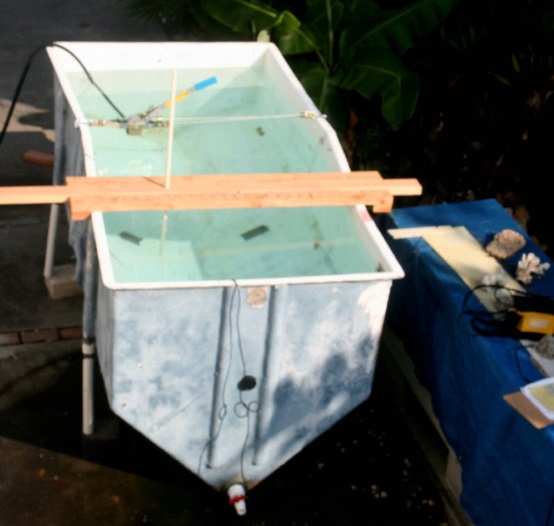
Figure 22. The 740-gallon fiberglass tank used for testing the 6255 Turbelle stream pump. The 240-gallon aquarium (covered with blue tarps to the right was also used in testing.) The wooden sliding jig holding the water velocity probe straddles the vat. Not all lab work is in a spotless lab where researchers wear white lab coats!
These graphs were traced, scanned, and opened in MS Paint for completion of the flow patterns (such as seen in Figure 2.)
Electrical information was gathered by a Kill-A-Watt electrical monitoring meter (P3 International).
Questions? Comments? Please leave them in them ‘Comment’ section below.
References and Further Reading
- Sebens K.P. and T.J. Done, 1993. Water flow, growth form and distribution of scleractinian corals: Davies Reef (GBR), Australia. Proc. 7th Int. Coral Reef Symp., Guam. 1: 557-568.
- Sebens, K.P., 1997a. Adaptive responses to water flow: morphology, energetics and distribution of coral reefs. Proc. 8th Int. Coral Reef Symp., Panama. II: 1053-1058.
- Sebens, K., J. Witting and B. Helmuth, 1997b. Effects of water flow and branch spacing on particle capture by the reef coral Madracis mirabilis (Duchassaing and Michelotti). J. Exp. Mar. Biol. Ecol., 211(1):1-28 (Abstract).
- Wijgerde, T., 2013. Coral feeding: An overview. http://www.advancedaquarist.com/2013/12/aafeature



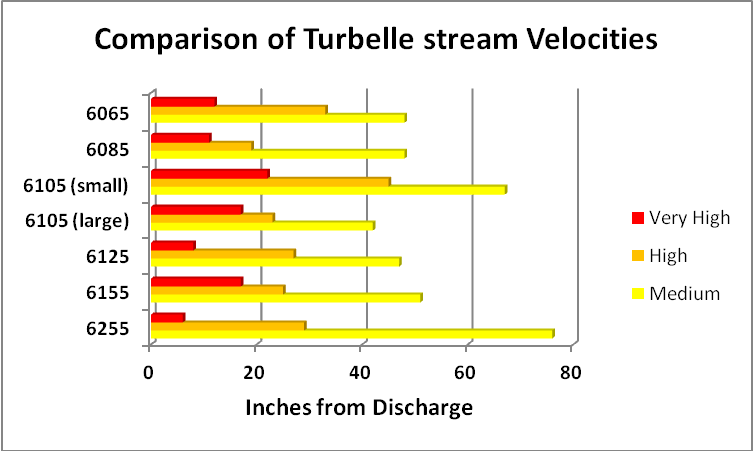
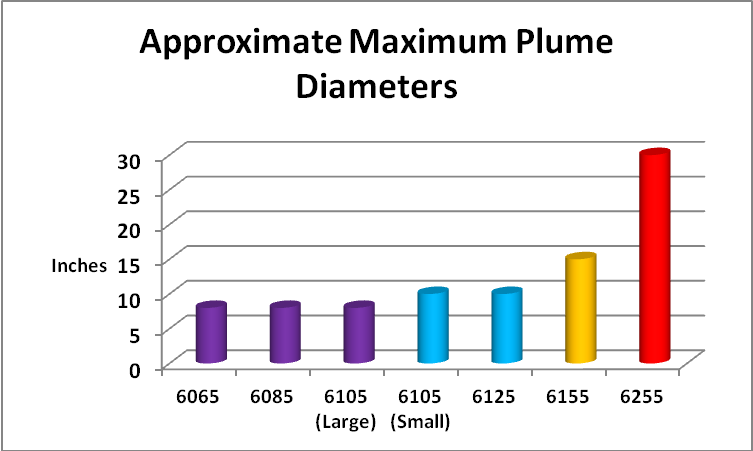
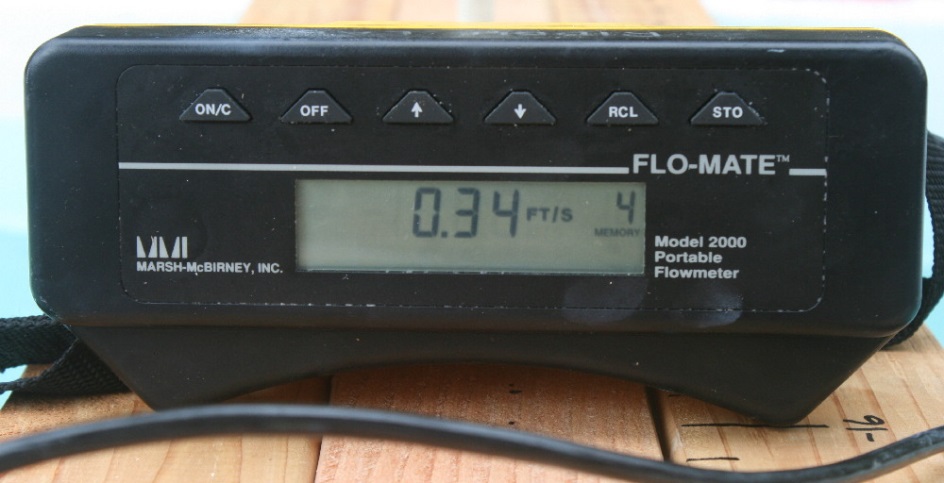

0 Comments